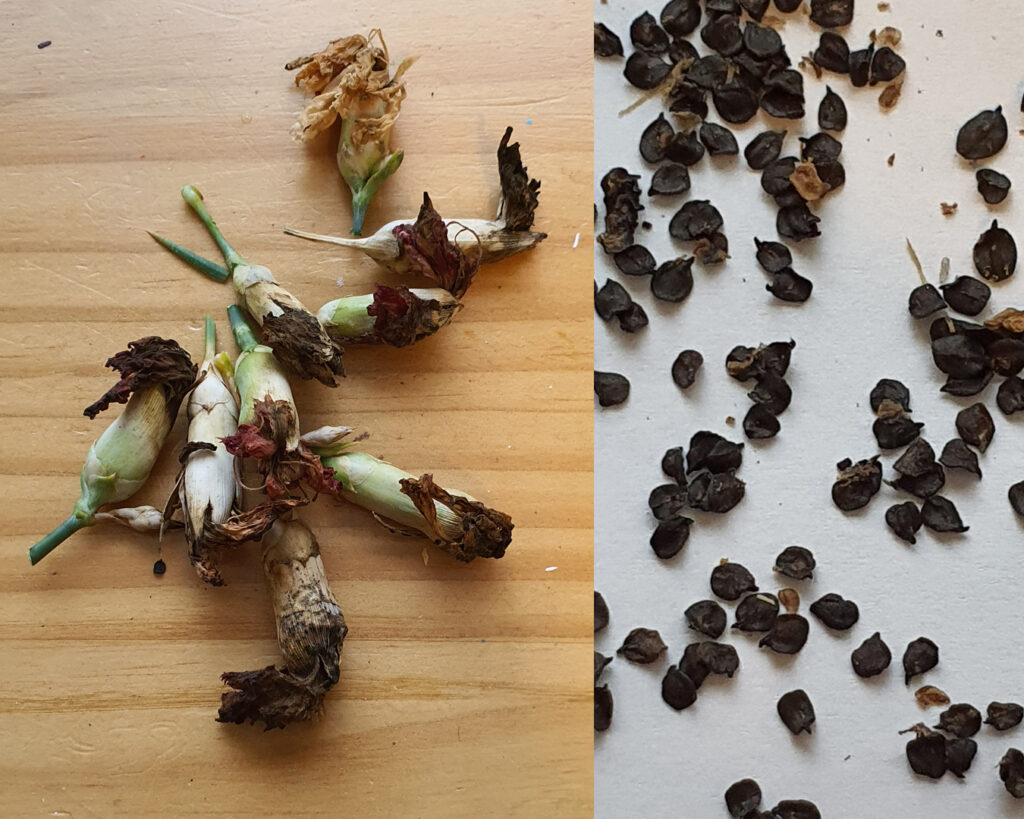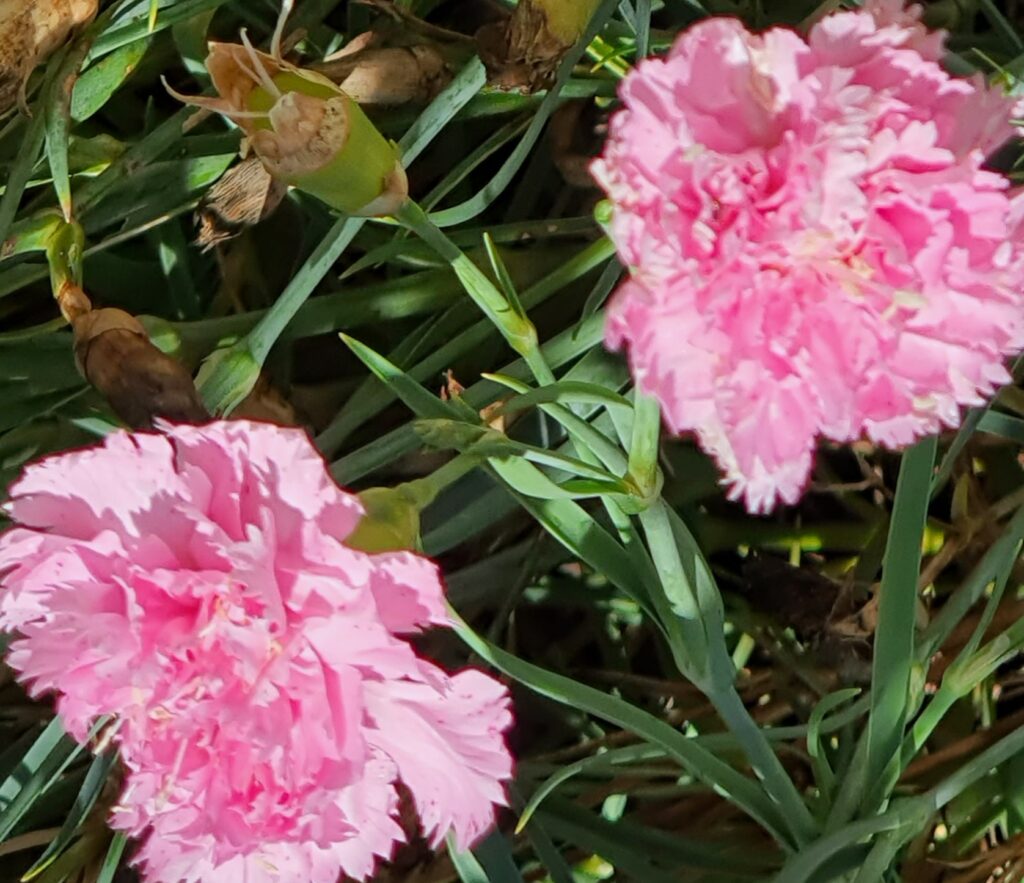It’s the end of Summer and the carnations are rattling with dry husks and full seed pods as I walk past them. If you want free and endless supplies of old-fashioned seeds, harvest your own. All you do is look for a fat, dry and dead flower head, break it open and tiny black seeds will either fall out or need a little gentle encouragement.

Not all flower heads are fertile, so just keep breaking them open until you have a pile of them. You can just scatter them back into the soil around the old plants, which is how they self-sow anyway, or gather them in labeled envelopes to give as gifts for friends and family.

If you live in a very cold and frosty area you can always get them going indoors first in the weeks leading up to warmer days, although I haven’t had to do that and we are in a Mediterranean climate. They like a sunny spot, and well-drained soil.
We have a lot of clay in our soil and to improve the drainage we add loads of mushroom compost and manure to it each year. When you routinely do this every year, the layers accumulate breaking down the heavy clay and attracting lots of fat worms. Carnations also prefer a slightly alkaline soil if you want to get into the pH factor.

The fragrance is spicy and sweet, nothing like the carnations you get in florist shops which look pretty but have no smell. They come in gorgeous colors of dark pink, light pink and white. We have them along the path surrounding the front of our house, and you can smell that beautiful spicy fragrance as you walk up the stairs to the front door.
Such a nice way to welcome people to your house. And if you want them to appear more bushy rather than leggy, just pinch out the middle tallest flower regularly to encourage sideways growth. I haven’t done this because there’s so many of them that the overall effect is enough.

My mother-in-law Tasia was a lovely and generous Greek lady. Carnations are native to the Mediterranean countries so she had been growing them since she was a young girl in her village near Kalamata. Every time we were leaving to go home after a visit she would pick a carnation so I could smell it on the way home. That’s the kind of memory you hold dear to you always.
